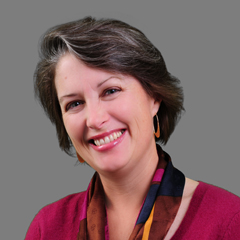Project Overview
To study the progress of the implementation of changes to workforce programs that aim to strengthen and improve our nation's public workforce system and help get Americans, including youth and those with significant barriers to employment, into high-quality jobs and careers and help employers hire and retain skilled workers.
WIOA builds on reforms initiated by its predecessor the Workforce Investment Act (WIA), with a stronger focus on building the evidence base for transforming and modernizing the public workforce system, especially among people with significant barriers to employment
Social Policy Research Associates
U.S. Department of Labor, Office of the Assistant Secretary for Policy, Chief Evaluation Office
Mathematica, together with its partner, Social Policy Research Associates, studied the implementation of changes to programs authorized under Title I (Adult, Dislocated Worker, and Youth) and Title III (Employment Services). WIOA encompasses six core programs for which coordination and integration were required to be strengthened at the state and local levels. We examined the variation in the approaches states take to implement key WIOA provisions, assessing early implementation progress, and identifying needs for further guidance or technical assistance. We also studied integration between these programs and their WIOA Title II (Adult Education and Family Literacy Act [AEFLA]) and Title IV (Vocational Rehabilitation [VR]) partners. In 2019, we visited 14 states and 28 local areas. In 2020, the team produced several products based on the site visits. They uncovered findings such as:
- State and local workforce planning efforts included greater involvement of AEFLA and VR partners.
- Greater efforts were made to provide cross-training for program staff and there was high demand for ongoing cross-partner communication.
- There was more streamlining of intake and coordination of referral in the American Job Center system, though few changes to co-location of partner staff.
- Employer services were often integrated across partners, especially for Titles I/III and VR programs.
- States are putting structures and processes in place to improve data sharing, though not integrating existing data systems.
Evidence & Insights From This Project

Intensive Services Help People Find Jobs, Earn More
According to interim findings from a rigorous national evaluation of services provided at American Job Centers through the Adult and Dislocated Worker programs, “intensive” services—staff assistance with finding and keeping a job—not only help people find a job but also lead to higher earnings.
Learn MoreRelated Staff
Progress is best made together.
Partner with us at the intersection of data science, social science, and technology to progress from inquiry to insight to impact. Our evidence-informed solutions empower you to see clearly and act quickly.
Efficiency Meets Impact.
That's Progress Together.
To solve their most pressing challenges, organizations turn to Mathematica for deeply integrated expertise. We bring together subject matter and policy experts, data scientists, methodologists, and technologists who work across topics and sectors to help our partners design, improve, and scale evidence-based solutions.
Work With Us



